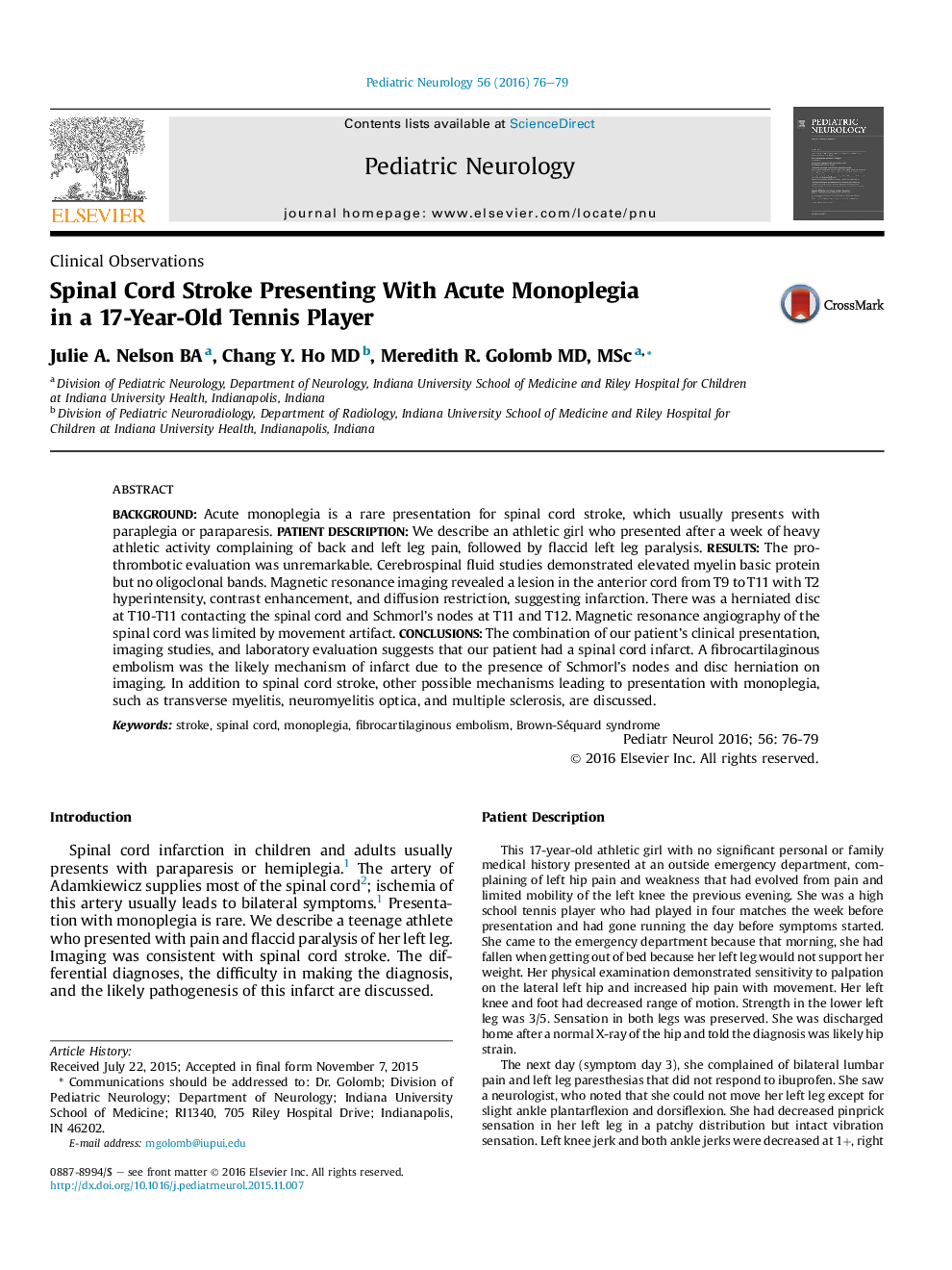| Article ID | Journal | Published Year | Pages | File Type |
|---|---|---|---|---|
| 3084469 | Pediatric Neurology | 2016 | 4 Pages |
BackgroundAcute monoplegia is a rare presentation for spinal cord stroke, which usually presents with paraplegia or paraparesis.Patient descriptionWe describe an athletic girl who presented after a week of heavy athletic activity complaining of back and left leg pain, followed by flaccid left leg paralysis.ResultsThe prothrombotic evaluation was unremarkable. Cerebrospinal fluid studies demonstrated elevated myelin basic protein but no oligoclonal bands. Magnetic resonance imaging revealed a lesion in the anterior cord from T9 to T11 with T2 hyperintensity, contrast enhancement, and diffusion restriction, suggesting infarction. There was a herniated disc at T10-T11 contacting the spinal cord and Schmorl's nodes at T11 and T12. Magnetic resonance angiography of the spinal cord was limited by movement artifact.ConclusionsThe combination of our patient's clinical presentation, imaging studies, and laboratory evaluation suggests that our patient had a spinal cord infarct. A fibrocartilaginous embolism was the likely mechanism of infarct due to the presence of Schmorl's nodes and disc herniation on imaging. In addition to spinal cord stroke, other possible mechanisms leading to presentation with monoplegia, such as transverse myelitis, neuromyelitis optica, and multiple sclerosis, are discussed.
